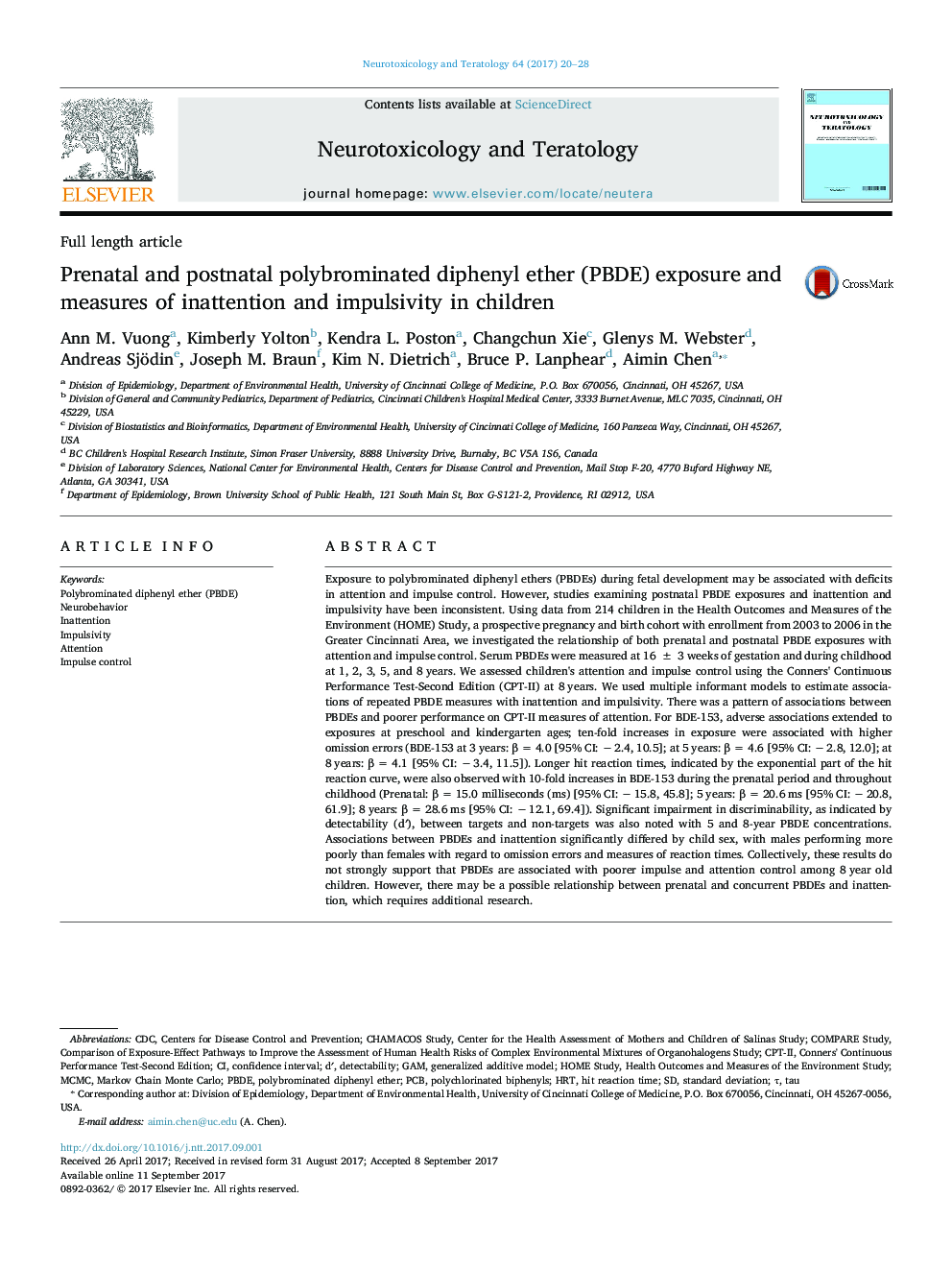| کد مقاله | کد نشریه | سال انتشار | مقاله انگلیسی | نسخه تمام متن |
|---|---|---|---|---|
| 5560969 | 1562072 | 2017 | 9 صفحه PDF | دانلود رایگان |

- No statistically significant association was observed between PBDEs and inattention or impulsivity.
- A pattern of associations was observed between prenatal and concurrent PBDEs and inattention in children.
- BDE-153 at multiple exposure times was adversely associated with inattention.
- Males had higher omission errors and longer hit reaction times than females.
- Significant impairment in discriminability was observed with 5 and 8Â year PBDEs.
Exposure to polybrominated diphenyl ethers (PBDEs) during fetal development may be associated with deficits in attention and impulse control. However, studies examining postnatal PBDE exposures and inattention and impulsivity have been inconsistent. Using data from 214 children in the Health Outcomes and Measures of the Environment (HOME) Study, a prospective pregnancy and birth cohort with enrollment from 2003 to 2006 in the Greater Cincinnati Area, we investigated the relationship of both prenatal and postnatal PBDE exposures with attention and impulse control. Serum PBDEs were measured at 16 ± 3 weeks of gestation and during childhood at 1, 2, 3, 5, and 8 years. We assessed children's attention and impulse control using the Conners' Continuous Performance Test-Second Edition (CPT-II) at 8 years. We used multiple informant models to estimate associations of repeated PBDE measures with inattention and impulsivity. There was a pattern of associations between PBDEs and poorer performance on CPT-II measures of attention. For BDE-153, adverse associations extended to exposures at preschool and kindergarten ages; ten-fold increases in exposure were associated with higher omission errors (BDE-153 at 3 years: β = 4.0 [95% CI: â 2.4, 10.5]; at 5 years: β = 4.6 [95% CI: â 2.8, 12.0]; at 8 years: β = 4.1 [95% CI: â 3.4, 11.5]). Longer hit reaction times, indicated by the exponential part of the hit reaction curve, were also observed with 10-fold increases in BDE-153 during the prenatal period and throughout childhood (Prenatal: β = 15.0 milliseconds (ms) [95% CI: â 15.8, 45.8]; 5 years: β = 20.6 ms [95% CI: â 20.8, 61.9]; 8 years: β = 28.6 ms [95% CI: â 12.1, 69.4]). Significant impairment in discriminability, as indicated by detectability (dâ²), between targets and non-targets was also noted with 5 and 8-year PBDE concentrations. Associations between PBDEs and inattention significantly differed by child sex, with males performing more poorly than females with regard to omission errors and measures of reaction times. Collectively, these results do not strongly support that PBDEs are associated with poorer impulse and attention control among 8 year old children. However, there may be a possible relationship between prenatal and concurrent PBDEs and inattention, which requires additional research.
Journal: Neurotoxicology and Teratology - Volume 64, November 2017, Pages 20-28